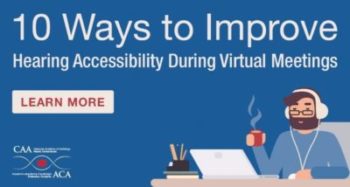Outline:
- Introduction to hearing health equity
- Basics of a public health approach to hearing health
- Public health vs Clinical care
- Differentiating inequality vs disparity vs inequity
- Defining epidemiology and social epidemiology
- Introduction to social determinants of health
- Applying a life course approach to hearing health
- Current status of hearing health among older adults
- Prevalence of hearing loss and hearing aid use
- Disparities in hearing health care by race and ethnicity
- Disparities in hearing health care by socioeconomic position
- Considerations re: socioeconomic position and the life course
- Limitations in the diversity of representation in hearing-related trials
- Mechanisms underlying disparities
- Public health-driven approaches to advance access and equity
- Potential of over-the-counter hearing aids
- Introduction to community-delivered hearing care
- Task sharing within hearing health
- Introduction to the HEARS intervention & RCT
- Findings from the HEARS RCT
- Discussion of HEARS methodology as an example of community-engaged research within hearing health
- Lessons for clinicians and researchers in advancing hearing health equity
Learning Objectives:
- Summarize the current status of hearing health among older adults, including existing disparities
- Describe public health-driven approaches to advance hearing health equity, including task sharing and community health worker-partnered models of care
- Identify opportunities to increase access and advance equity within



